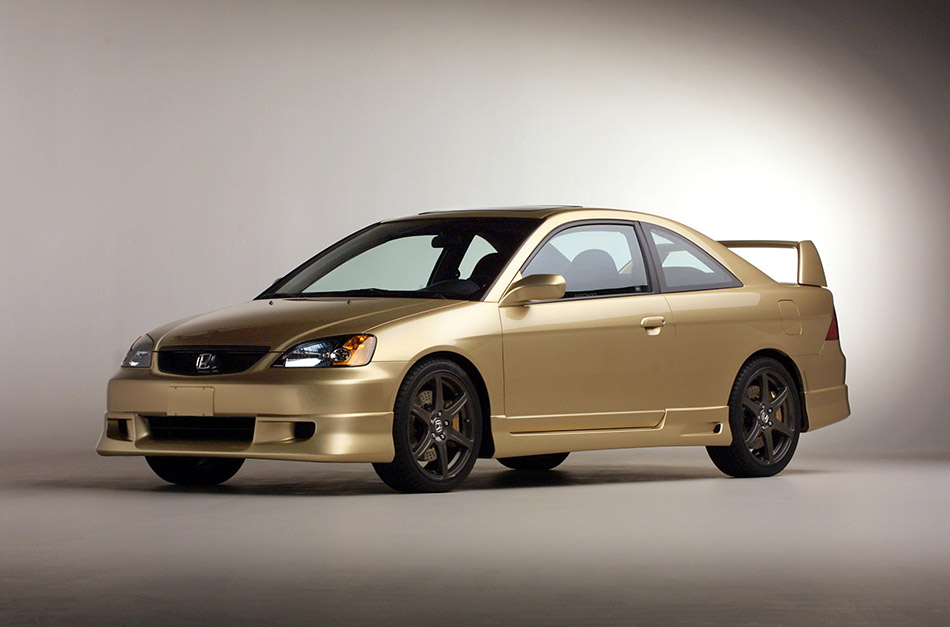Since its U.S. introduction in 1973, the Honda Civic has become an icon of the Honda line. The Civic has played an important role in establishing the key attributes Honda vehicles have become known for: dependability, quality, reliability, and efficiency. Each new generation has built on the past, elevating the Civic to its position as the acknowledged small car leader. The Civic is now sold in more than 140 countries and has been Honda's best-selling vehicle on a global basis for more than 20 years. More than 10 million Civics have been sold since its introduction.
Prior to the introduction of the Civic in the United States, Honda had sold fewer than 35,000 cars after entering the U.S. vehicle market in 1970. But the introduction of the first Civic Hatchback was followed almost immediately by the first oil embargo, first gasoline shortages and sky rocketing fuel prices. Civic sales went from 43,119 units in 1974, its first full year on the market, to more than 100,000 units in 1975, and Honda was firmly entrenched in the car business.
Over the years the Civic line has expanded. A second generation was introduced in 1980 and added a sedan to the model lineup, which included a three-door hatchback and five-door station wagon. In 1993 a Coupe was added.
In 1986, Honda began building the Civic in America at Honda of America Mfg., in Ohio, using both domestic and globally-sourced parts. By mid-2000, Honda had produced more than three million Civics in the U.S.

Along the way the Civic developed a strong following. Its combination of outstanding value, performance and style made it a favorite of young buyers. The introduction of the CRX in 1984 elevated that following to cult status, which continued to grow with the introduction of the Civic Coupe. Today the Civic is at the center of the booming compact car performance trend popular with young buyers across the country and it has even led one leading aftermarket supplier to say "the Civic is the '57 Chevy of a new generation of hot rodders."
Not only has the Civic developed a large owner body, it is also a very loyal owner body. Nearly one-third of all Civic Sedan owners buy another one and more than 40 percent of all Civic Coupe owners go on to buy another Coupe. And in either case, more than 60 percent of all Civic owners are likely to buy another Honda.
Environmental Leadership
The Civic has always been at the forefront of automotive environmental leadership in terms of both high mileage and low emissions. It started with the CVCC engine in 1975, which made the Civic the first vehicle to meet the Clean Air Act without the need for a catalytic converter, something most manufacturers said couldn't be accomplished. In '77, the CVCC Civic sat atop the Environmental Protection Agency's first-ever list of Top Ten most fuel efficient cars and a Civic has been on the list ever since.
In 1986, the Civic CRX-HF was the first mass-produced 4-cylinder car to break through the 50 miles per gallon barrier. In 1995, the '96 Civic became the first gasoline-powered car to meet California's Low Emission Vehicle (LEV) standard and two years later, Honda decided to voluntarily sell the LEV-certified Civic in all 50 states, another industry first. Another '96 model, the Civic HX Coupe, was the first to introduce the automatic Continuously Variable Transmission (CVT) to the lineup and the first automatic to make the EPA's Top Ten list. And for '98 Honda added a natural gas-powered model, the Civic GX, which has achieved "Super Ultra Low Emission Vehicle" status, and led the EPA to say the GX has simply the "cleanest internal combustion engine in the world."
Solid Foundation
The current generation Civic lineup is the most successful ever. When introduced in 1995 as a '96 model, it immediately shot to the top of the small car sales chart and has been there ever since. It was one of the five best-selling cars in America in 1999 and has sold more than 300,000 cars in each of the past three years.
Maintaining this leadership position in the face of greatly improved competition was the heavy challenge Honda engineers took on when creating the seventh generation Civic. As good as it was, the engineering team knew that simply building a better Civic wouldn't be enough.
As a result, Honda's designers and engineers set out to develop a new Civic that would go beyond its traditional class leadership role, aiming to elevate the next Civic into a class by itself.
Concept and Development Targets
The development concept for the seventh generation Civic started with a plan to build on the strengths and customer expectations of the best-selling current Civic, the acknowledged benchmark in the small car class. Like all Hondas, but especially Civic, that meant starting from a strong "DQR" base of dependability, quality and reliability. Added to that would be Civic owner expectations, including outstanding safety, a fun-to-drive feel, excellent family comfort, sporty styling, economical operation and a good price-to-value relationship. They also knew owners liked the size of their cars, but wanted more interior room.
So the engineers wanted the new Civic to retain its small car feel and nimble handling, with current exterior dimensions, but with a more spacious interior.
It had to maintain the efficiency that the Civic has become known for, while reflecting fresh, contemporary styling.
Source: Honda




















